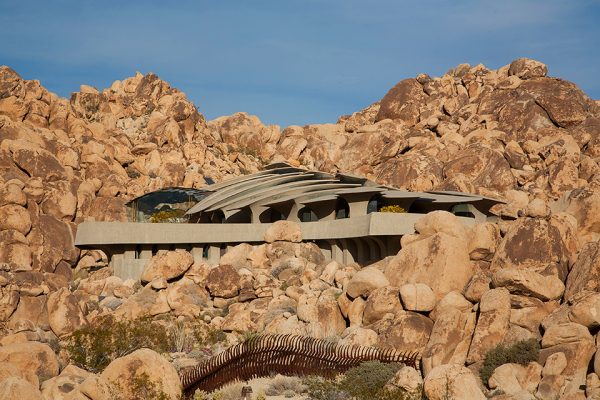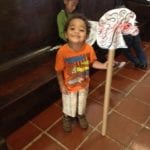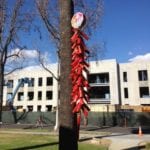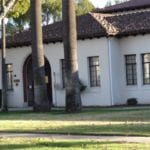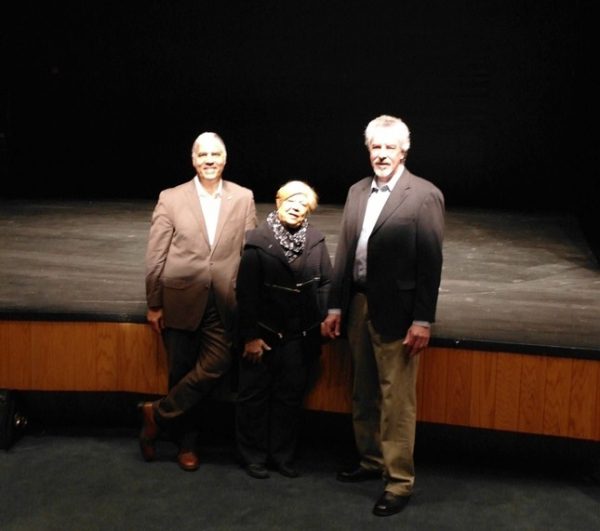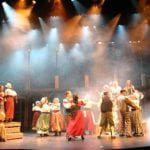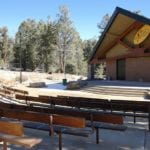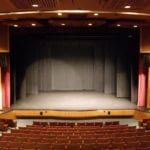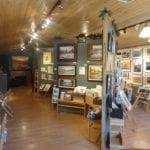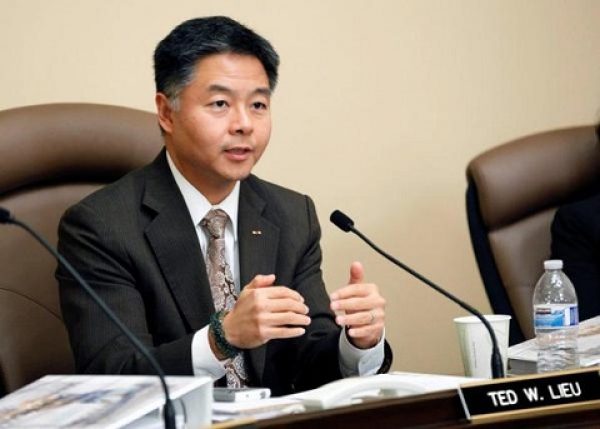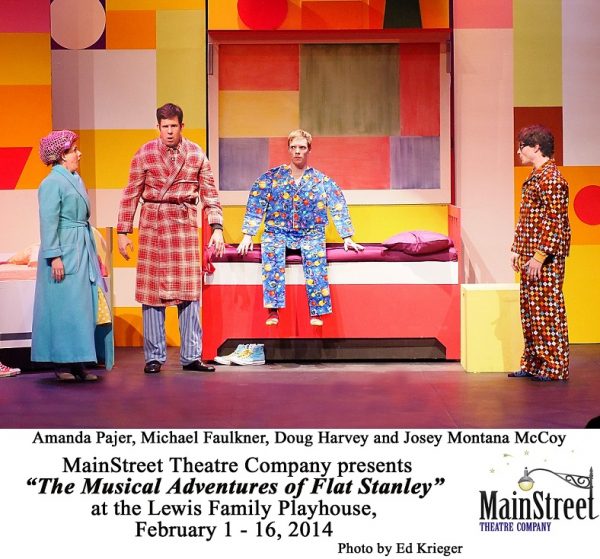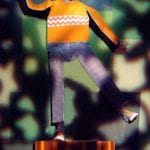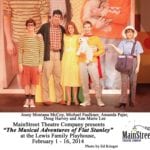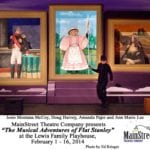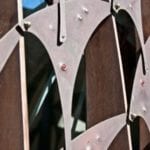
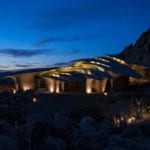
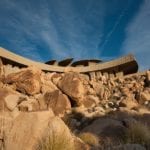
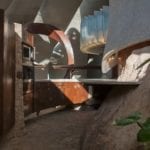
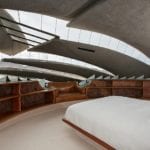




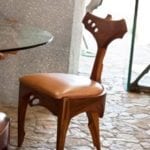
Passion for art and nature led to the collaboration and creation of a unique organic house nestled between massive rock formations at the edgeof the Joshua Tree National Park. It was home to a creative and artistic couple.
Bev and Jay Doolittle, drawn to Joshua Tree in 1978, instantly fell in love with the area. They bought a little stucco house in the Panorama heights and settled in. At the time, Jay and Bev, both artists, were selling their art in malls and art fairs. They had little money, but they imagined a house built inside the rocks that would give them the feeling of living outside, inside. They had no idea that the house of their dreams would eventually be built.
Bev, known for her intricate paintings of nature and the American West, said her art changed in 1973 when she and Jay left their jobs at a Los Angeles advertising agency and spent a year traveling through Canada and the western United States. Bev, who always loved anything western, was deeply influenced by Native Americans – their philosophy and their connection to the earth. She photographed Indian artifacts in every museum they visited, and is still using those photographs as reference for her work.
The camouflage element in Bev’s art is a tool to coax the eye away from the obvious and draw the viewer deeper into the picture. It’s used to tell a story. There are suggested images in clouds, shadows, logs. “It’s not a new idea. It’s just something that evolved,” Bev said, describing this evolution of her work as something that has made her more aware of Mother Nature.
What people respond to in her work, Bev hopes, is what inspired her to paint in the first place – a deep love and appreciation of nature. In the mid-1980‘s, Bev signed with The Greenwich Workshops in Connecticut, a publisher of limited edition prints and became acclaimed as a print artist. With her career taking off, the Doolittles purchased 10 acres of what they lovingly call “The rock pile” from Jay’s father. They decided to build their dream home. “We loved the feeling of the water, desert and the oasis. We wanted to recreate that, and have the same feeling in our house,” Bev said.
Inspired by Indian Cove and Indian Canyon, the Doolittles decided to look for an architect that could design the house they wanted. While searching through trade magazines they discovered Kendrick Bangs Kellogg, an architect renowned for his organic designs — including many of the Chart House restaurants, and the 1981 Yen residence in La Jolla. They loved his work. Not sure if he would take on their project, the Doolittles took pictures of the “rock pile” at different times of the day and sent them to Kellogg. He agreed and after three months, and much research, Kellogg chose a particular ridge of boulders near the park for the placement of the house. It turned out to be the same section the Doolittles had chosen.
“The Doolittles were unusual clients.” Kellogg said. “We had discussions, and they said, ‘you do what you think’.”
The Joshua Tree house was started in 1986 and proceeded slowly. Workers used a golf cart, and a small Kubota tractor to haul building materials along the path too narrow for conventional equipment. The crews remained small, less than 20 workers at any one time. “A lot of the time, that was too many,” said Bev. The Doolittles, who lived down the street while the house was being built, were involved with the entire process, but had to wait nearly 15 years to move in. “We’re artists,” she said. “We didn’t know anything about pouring cement. It was all hand-built bucket by bucket.”
Master craftsman, John Vugrin, who had worked for Kellogg since he was a teenager was hired to design and build the interior of the house. He made the first etched-glass door, and the Doolittles knew he was the right person for the job. “He understood all the lines of the house,” Bev said.
It takes a particular mindset for a house like this and Vugrin — a quiet, unassuming man, has both the eye and craftsmanship of a master artisan. Doors, door handles, floor grates, light switch plates, chairs and cabinets are made with precision and excellence. Every piece is unique, and nothing is duplicated. Details of fossils, shells or abstract designs are embedded into cabinet tops, handles, and doors. The gate-like front door has a cut-out design with tiny semi-precious stones placed strategically on the pointed copper pieces. Inside, the metal is covered in gold leaf. Wood grains are pieced together to create surfaces worthy of European churches. Marble cabinets with delicate, hand-carved organic designs look more like sculptures than furniture. Vugrin, who, during the building of the house, spent time in Carrera, Italy, made many of the pieces there and sent them back to California. Honduras mahogany was brought in and cured for 10 years to prepare it to withstand the dryness of the desert. There are etched designs on all the eleven doors and many windows. Because of the irregular stone floors, Vugrin designed and built three legged wood chairs, with stylized, carvings on the edges and backs. Currently, he is completing the construction of a glass bottom hot tub that will be inserted into the center of what was the pool. It will become a lush area with plants and a waterfall that spills over the edge of the floor through an opening in the bottom of the glass window, and down the side of the house before it is recirculated.
A soil engineer came to the house to test the stability of the boulders. Some of the rocks were stable, and some were not. The entire structure was reinforced with rebar and steel. There are 26 freestanding cement wings that make up the perimeter walls, and 900 panes of 1/2 inch glass between the columns with thinner glass in the ceiling.
“You could take anyone of those wings, and set it out in the park like a piece of sculpture,” Bev said.
When the Doolittles wanted a fence Kellogg knew it would have to be a work of art. Most fences follow property lines, not this one. Vertical strips of steel undulates around the property giving it the appearance of the backbone of a dinosaur. The fence, made with steel stock, rolls back and forth at different angels, vertical and horizontal, longitudinal and latitudinal.
Vugrin said the fence was built to stop the bus loads of people that came to view the house.
“It rolls with the landscape,” said Kellogg. “That’s the organic way.”
There are two gates, one to get in and one to get out. And the gates, made with titanium balls, swing back and forth so easily you can open it with your little finger.
When asked about the inspiration to build a house like this, Bev said, “For both my husband, Jay, and I, the natural world has been our artistic inspiration.” They created a home and a life that celebrates that ascetic.
The Doolittles are selling the house because they feel they are getting too old for all the steps. Although, it was hard to leave, they have a new home in Southern Utah, and Beverly has a new studio with a view of red rock cliffs. The changing light fascinates her and fills her days with delight as it had in the Joshua Tree house. She is painting and looking forward to sculpting. “There are 30 pounds of clay here with my name on it,” she said.
Jay at seventy-one has decided to give writing fiction a try. “My life has been involved with the visual arts, so this change is a kind of fountain of youth,” he said. “I wake up each morning with the enthusiasm I remember at eighteen.”
When Bev was asked why art was important to her, she said, “I love the process of learning, exploring, and growing as a person (and artist). Every drawing and painting, good or bad, is a new learning experience. And hopefully, if I live to be ninety, I will still be trying to learn, improve my art skills, and explore new mediums with which to express my ideas.”

